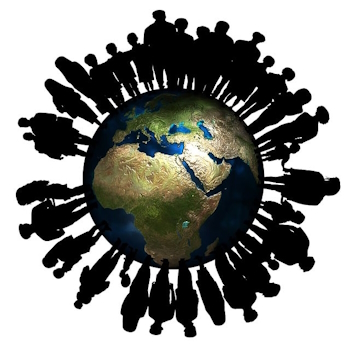
We don’t talk about how much language is a communication technology with it’s own compatibilities and incompatibilities. Until around 2004, I had no idea how much of an impact it had. CARDICIS opened my eyes to a lot, as simple as it was.
Growing up, the education system and or my school decided that it was a brilliant idea to teach both Spanish and French at the same time, and I quickly decided neither was worth pursuing not because of my teachers, but because I did not understand how important it was and because it was initially difficult for me. Then I got behind, then I got further behind, and then I was past the point of no return for the academic aspect in secondary school.
If the system was dumb, so was I, but the system was older and I had the excuse of being young and ignorant.
I bring this up for a few reasons. In the vein of what I have been writing about bias, medium and messages and other stuff in the context of artificial intelligence, language is a bigger deal than what most monophones (people who speak only one language) might begin to understand.

“Because language flows in the same direction as other elements of culture… For the most part, language flows in the other direction, from the conquerors to the conquered.”
“Speaking Of Tongues: Justin E.H. Smith On The Mysteries Of Language“, Justin E.H. Smith, Professor of Philosophy at the University of Paris
Language through conquest has long been a topic of colonialism. The Treaty of Torsedillas that Spain and Portugal agreed to started off by a Papal decree. Conquest was religious, divided by language because of division of European nations. England, France and the Netherlands simply chose to ignore the treaty. England was still Catholic when the treaty was written, and continued to be until 1534.
The medium was the language, and the message was the language, but the message brought new medium of religion which had it’s own message, and so on.

“…I think we’re now moving into a period when we will leave it to the machines to speak to each other. A lot of the tedious work of coding came during an early phase of computing. We’re developing artificial intelligence to do that for us. When we have only machines speaking machine, however, it’s going to be a big problem, because their language is going to proliferate beyond our ability to fully grasp even how it’s proliferating.”
“Speaking Of Tongues: Justin E.H. Smith On The Mysteries Of Language“, Justin E.H. Smith, Professor of Philosophy at the University of Paris.
Well, when artificial intelligences did start talking to each other – we’ve already seen it happen, as in 2017 when Facebook chatbots were designed to negotiate with each other. In 2022, DALL-E2 was noted using it’s own language as well. In fact, I wouldn’t be surprised if it had not happened before and we didn’t hear about it. We certainly will be hearing more about it.
None of this is simple. Different languages evolved largely because of geographic isolation until people started wandering between civilizations. There’s other types of isolation too, but in the end what is remarkable is that these large language models, and machine learning/deep learning with a multilingual content may be some of the best ways for us to get that universal translator that Star Trek always has breaking (probably Microsoft updates), and that Douglas Adams simplified to a BabelFish.

And it goes beyond that.
Consider The Great Wave Off Kanagawa. Some of you reading this, if not most at the time of this writing, read left to right so when we view the image, we see the wave first, then the boats. Many people don’t even notice the boats and the people on them.
Yet the artist Hokusai was Japanese, and Japanese look from right to left. A native Japanese speaker would likely see the boats first, and therefore the peril those in the boats are in seems more real. A simple thing like the direction of reading impacts how we view images even beyond language.
As a software engineer, I wrestled with internationalization, different keyboard types, etc – but if we accept language as a communication technology, as well as an art, it’s pretty clear that transmitting and receiving information lacks the depth of interpreting.
That can be much more complicated for us, as well as our creations presenting unbiased output for us.
Justin E. H. Smith, who I quoted from an interview, has a fresh book coming out that you can pre-order now: The Internet Is Not What You Think It Is: A History, a Philosophy, a Warning
2 thoughts on “Language as a Communication Technology”